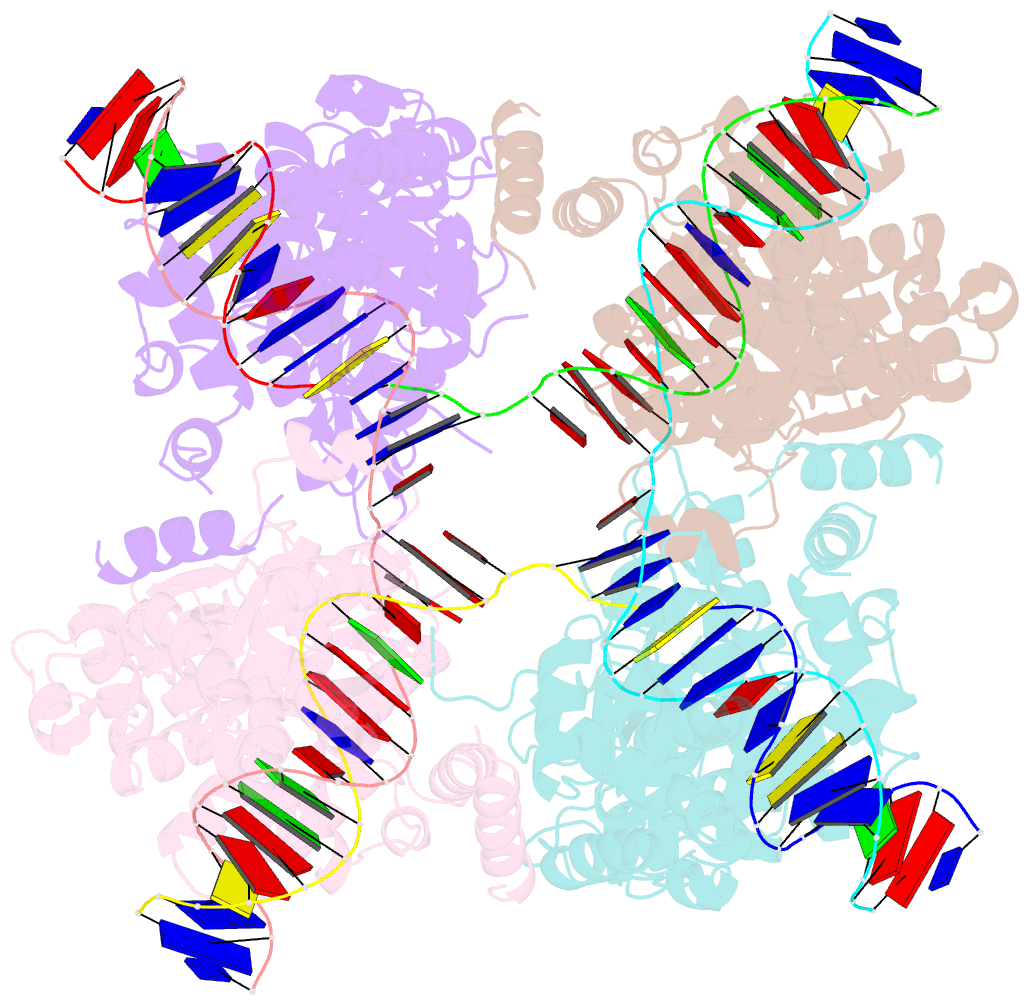Summary information and primary citation
- PDB-id
- 1p4e; SNAP-derived features in text and JSON formats;
DNAproDB
- Class
- DNA binding protein-recombination-DNA
- Method
- X-ray (2.7 Å)
- Summary
- Flpe w330f mutant-DNA holliday junction complex
- Reference
- Rice PA, Chen Y (2003): "The role of the conserved Trp330 in Flp-mediated recombination. Functional and structural analysis." J.Biol.Chem., 278, 24800-24807. doi: 10.1074/jbc.M300853200.
- Abstract
- The active site of Flp contains, in addition to a transdonated nucleophilic tyrosine, five other residues that are highly conserved within the lambda-integrase family of site-specific recombinases and the type IB topoisomerases. We have used site-directed mutagenesis and x-ray crystallography to investigate the roles of two such residues, Lys223 and Trp330. Our findings agree with studies on related enzymes showing the importance of Lys223 in catalysis but demonstrate that in Flp-mediated recombination the primary role of Trp330 is architectural rather than catalytic. Eliminating the hydrogen bonding potential of Trp330 by phenylalanine substitution results in surprisingly small changes in reaction rates, compared with dramatic decreases in the activities of W330A, W330H, and W330Q. The structure of a W330F mutant-DNA complex reveals an active site nearly identical to that of the wild type. The phenylalanine side chain preserves most of the van der Waals interactions Trp330 forms with the Tyr343-containing trans helix, which may be particularly important for the docking of this helix. Our studies of Trp330 provide the first detailed examination of this conserved residue in the lambda-integrase family, suggesting that the relative importance of active site residues may differ among Flp and related enzymes.





